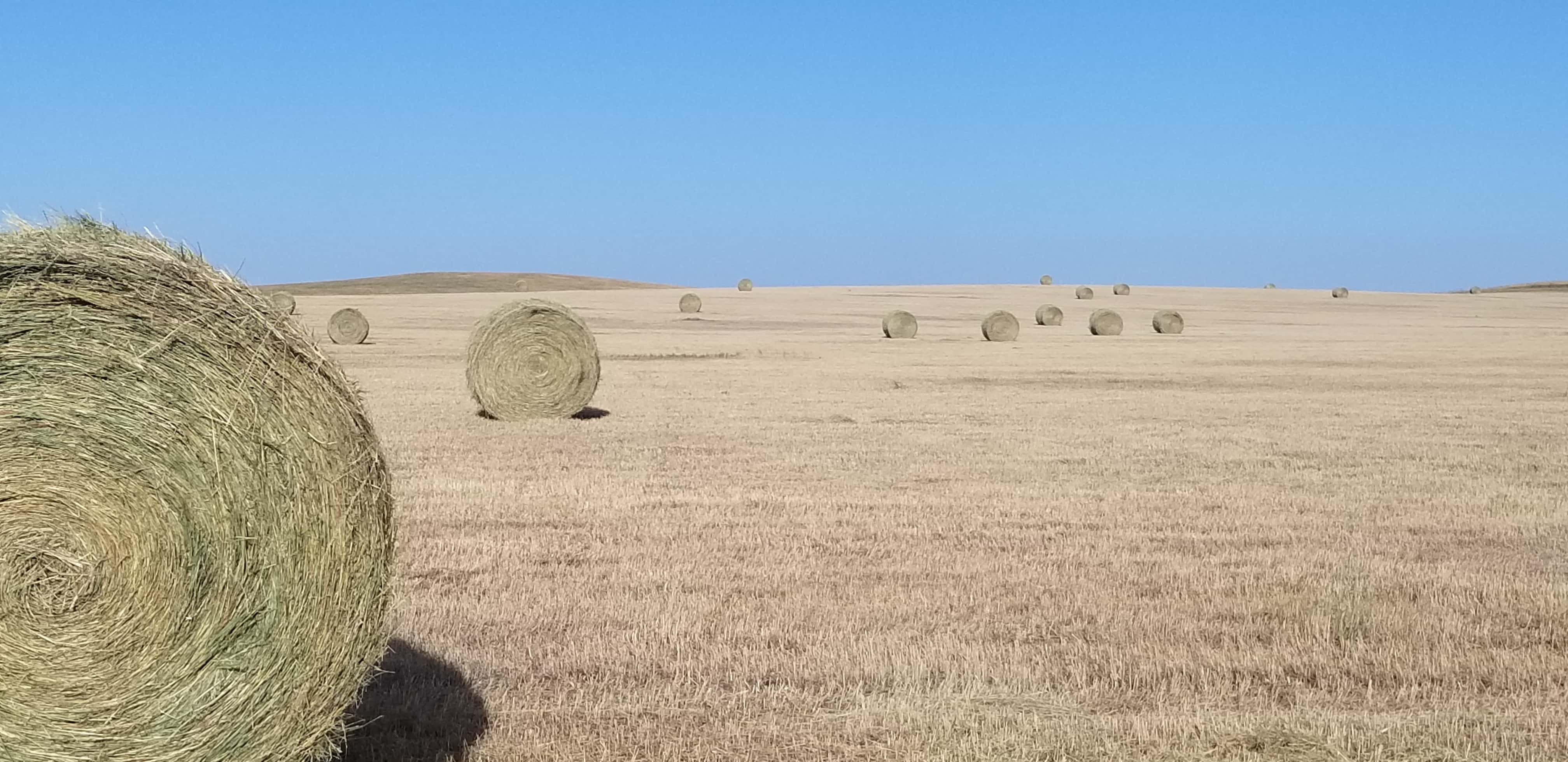
Image and content provided by NDSU Extension
Harvested forages are a critical component of winter feeding programs for the majority of North Dakota’s cattle herds.
Many areas of the state were deficient in moisture during critical times for forage growth, and some producers may be facing a short hay supply.
“Conducting an inventory now will give producers a good idea of possible deficiencies and allow time to develop the best options for the upcoming feeding season,” says Janna Block, Extension livestock systems specialist based at North Dakota State University’s Hettinger Research Extension Center.
The first step is to get an accurate count or measurement of bales and/or other forages (silage, etc.) harvested. These should be grouped by lot, which is defined as similar species harvested from the same field within a 48-hour period.
Use a commercial scale to get a good estimate of bale weight by weighing several loads or multiple individual bales. Understanding the dry matter content of forages is important.
Dry matter refers to material remaining after removal of water. Livestock nutrient requirements are calculated on a dry matter basis to eliminate the dilution factor from water.
Knowing the moisture content of forages is important because moisture affects weight but does not provide nutrients to the animal. Although water is required, needs should be met through actual water sources.
The dry matter of forages can be determined by using a Koster moisture tester or other electronic methods at home or by submitting a sample to a commercial laboratory for analysis. If the dry matter content of bales is unknown, an estimate of 85% to 90% can be used for the initial inventory estimate; however, laboratory analysis is recommended for ration balancing.
The second step is to estimate potential feed needs. A variety of factors influence how much forage a cow will eat every day. Body weight, stage of production and environmental factors will play a key role, in addition to forage quality.
Current numbers and estimated weights for each class of livestock (mature cows, bulls, heifers, yearlings, calves, etc.) to be fed this winter should be written down. Although actual intake will vary, an estimate of 2.5% of body weight can be used to determine dry matter forage requirements of each animal per day.
For example, assume a producer has 175 mature cows weighing 1,350 pounds each, eight bulls weighing 1,800 pounds each and 26 yearling heifers weighing 670 pounds each. Mature cows would require 5,906 pounds per day (1,350 x 0.025 x 175), bulls would require 360 pounds per day (1,800 x 0.025 x 8) and heifers would require 436 pounds (670 x 0.025 x 26), for a total of 6,702 pounds of dry matter per day.
If bales weigh 1,400 pounds apiece and contain 88% dry matter, each bale would supply 1,232 pounds of dry matter (1,400 pounds x 0.88). For this example, this means that about six bales would be required to meet feed needs for each day. If the feeding period is 210 days, a total of 1,260 bales would be needed. This is the bare minimum amount of bales without considering dry matter losses or waste. Storage and feeding losses also should be included in calculations to ensure that adequate hay supplies are available.
If the forage is stored outside, dry matter losses could be as high as 20%. If stored inside, losses will decrease to about 7%.
Feeding losses also vary depending on the feeding system. When hay is fed in bunks, waste may be as low as 3% to 14%. If bales are rolled out on the ground, losses due to trampling and overconsumption could be as high as 45%, particularly when cattle are fed for multiple days at one time. With free choice access to large quantities of forage, intake typically will increase by 15% to 20% beyond what is needed to meet requirements.
If conditions allow, daily feeding helps force cattle to eat hay that might otherwise be wasted. If hay costs $85 a ton and waste could be reduced by 25% by covering the hay and feeding on a daily basis, this would result in savings of more than $20 per ton. These savings could be used to invest in extra equipment such as feed bunks or even a bale processor or feed wagon.
Assuming an overall loss of 15% using the above example, an additional 189 bales may be needed for the feeding period. Including this waste factor helps ensure that forage supplies will be adequate.
Keep in mind that this estimate of feed needs does not consider differences in forage quality or specific nutrient requirements of cattle. Completing the process described should help identify a potential forage shortage; however, actual amounts of forage (and possibly supplement) to be fed should be determined by utilizing laboratory analysis of forage and developing a balanced ration.
“As you conduct your inventory, don’t forget to account for other sources of forage, such as silage and cover crops,” says Miranda Meehan, NDSU Extension livestock environmental stewardship specialist.
You can learn more about assessing these sources in a video (https://youtu.be/QZbHrp1gp2o) that discusses assessing and stretching forage supplies.
A simple spreadsheet to calculate winter feed needs has been developed by the forage team at the University of Wisconsin-Madison. It is available as a free download at https://fyi.extension.wisc.edu/forage/harvest/#inventory under the “Forage Inventory” category. For more information about conducting a forage inventory or developing a winter ration, contact your local NDSU Extension agent.
